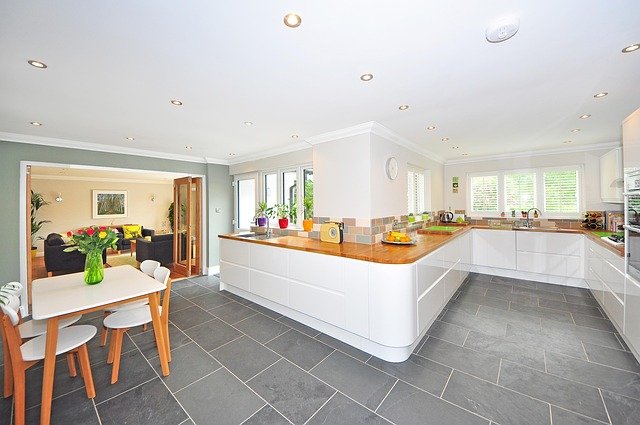How Bifacial Solar Panels Are Shaping the Future of Clean Energy

As global demand for sustainable energy surges, solar technology continues to evolve in smarter and more efficient directions. Among the many innovations, bifacial solar panels and high-capacity options like the BougeRV 300W solar panel are helping redefine how we capture and utilize solar energy, whether for residential, commercial, or off-grid use.
While solar panels have been around for decades, these two variations are leading a new wave of adoption. They offer enhanced energy production, better space utilization, and greater adaptability across diverse environments. In this article, we’ll explore the importance of these two technologies, the benefits they bring, and how they fit into today’s changing energy landscape.
Understanding the Basics of Solar Panel Output
Before diving into the specifics of bifacial and 300W solar panels, it’s important to understand a fundamental aspect of solar energy: output capacity. Wattage refers to how much energy a panel can produce under standard test conditions. A 300W solar panel, for example, can theoretically generate 300 watts of electricity per hour in optimal sunlight.
For most homes or small off-grid setups, 300-watt panels strike a good balance between size, power, and affordability. They’re often used in arrays where multiple panels are combined to meet a site’s energy demands. But not all 300-watt panels are created equal, especially when bifacial technology enters the mix.
What Sets Bifacial Solar Panels Apart?

Traditional solar panels capture sunlight from one side—the side facing the sun. Bifacial solar panels, on the other hand, are designed to collect light from both the front and back surfaces. That means they’re able to generate additional power by using reflected sunlight from the ground, water, or surrounding surfaces.
Here’s what makes bifacial solar panels stand out:
- Increased Energy Yield: Depending on the conditions and installation, bifacial panels can produce up to 10–30% more energy than their monofacial counterparts. This boost is especially useful in areas with high reflectivity, like snowy landscapes, sandy environments, or white rooftops.
- Durability and Longevity: Most bifacial panels are built using glass-on-glass construction, which enhances structural strength and offers better resistance to environmental stressors like moisture or temperature swings.
- Better ROI in Certain Setups: For commercial or ground-mounted installations where reflectivity can be optimized, bifacial panels offer a quicker return on investment due to their higher total energy output.
The Versatility of a 300W Solar Panel
Whether or not it incorporates bifacial technology, a 300W solar panel serves as a solid cornerstone for many solar setups. Its power rating makes it efficient enough to contribute significantly to household energy needs while being compact enough for easier installation.
Use cases include:
- Residential Solar Systems: A typical household might install several 300W panels to offset electricity bills and reduce reliance on grid power. These panels are commonly mounted on rooftops, carports, or even backyard ground arrays.
- Off-Grid Applications: For cabins, boats, or mobile setups like RVs, 300W panels are often used to charge batteries, power appliances, and support sustainable travel.
- Hybrid Systems: Many users combine 300W panels with other renewable sources (like wind) or battery storage systems to create hybrid energy solutions that offer more consistency and flexibility.
While a single 300W solar panel may not power an entire house on its own, it forms a critical piece of larger energy strategies, especially when combined with efficient inverters and storage.
How These Technologies Complement Each Other
When combined, bifacial design and 300-watt output form a compelling duo. A 300W bifacial solar panel provides both the compact efficiency of mid-range wattage and the performance enhancement of dual-sided energy collection. These panels can adapt to a variety of environments and outperform traditional units in the right conditions.
For example, in a commercial solar farm with reflective ground cover, a 300W bifacial panel could outperform a traditional 330W monofacial panel by capturing additional back-side irradiance. That added production accumulates over time, improving both energy generation and system value.
Considerations Before Choosing a Panel Type
While both bifacial and 300W panels offer distinct advantages, the best choice depends on your specific needs and constraints.
- Location and Surface Reflectivity: Bifacial panels excel in environments with high albedo (reflective surfaces). If you’re installing on a typical dark-shingled roof, the gains from bifacial technology may be limited unless you’re using light-colored materials or elevated racking.
- Available Space: If your installation area is limited, 300W panels strike a good balance between output and size. For larger properties or commercial spaces, bifacial arrays might offer better long-term returns.
- Budget and Installation Complexity: Bifacial panels can be slightly more expensive and may require specialized racking to allow rear-side light exposure. It’s worth weighing those costs against the projected energy yield.
The Bigger Picture: Energy Independence and Sustainability
Both bifacial solar panels and 300W solar panels are helping push the clean energy movement forward. As more individuals, businesses, and communities seek to cut carbon emissions and reduce utility costs, these technologies provide accessible, scalable options.
They reflect a shift from basic solar adoption to smarter, performance-driven solar integration—where how you generate power matters as much as how much power you generate. By leveraging both efficiency and adaptability, these panels offer a path to more resilient and future-ready energy systems.
Final Thoughts
In today’s energy-conscious world, every watt counts. Whether you’re building a robust residential system or optimizing a commercial installation, the right choice of solar panel can make all the difference. Bifacial solar panels bring innovation and higher energy yield, while the 300W solar panel offers practicality and proven performance.
As solar technology continues to advance, these solutions show that you don’t have to choose between power and efficiency—you can have both, and use them in ways that suit your environment, your goals, and your future.




